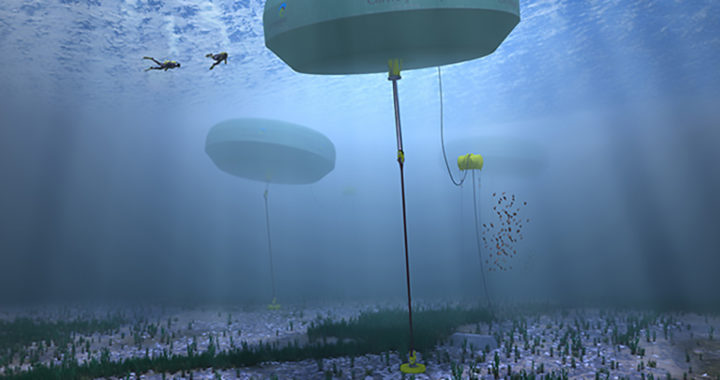Australia-based Carnegie Wave Energy Limited installed its CETO technology system off the coast of Garden Island in Western Australia in late 2014 to use oceanic waves to generate zero-emission electricity while desalinating oceanic water simultaneously.
Named after a Greek sea goddess, the CETO system is a technology for harnessing wave energy. It is different from other waver energy devices and facilities because it operates under the water, thereby making it invisible from the shore, away from breaking waves and beachgoers, and safer from large storms.
Understanding How the CETO System Works
The system is capable of converting ocean wave energy into zero-emission electricity while also desalinating ocean water. Furthermore, the system features an eco-friendly design making it attractive to marine life.
Carnegie Wave Energy has used its fifth iteration of the CETO system called the CETO 5 to demonstrate the commercial and large-scale use of wave energy under the Perth Wave Energy Project. This project is the first commercial-scale wave energy array in the world. It is connected to the grid and can produce desalinated water.
The operational concept of the system is considerably simple. The CETO 5 includes three submerged 240 kW buoys and water pumps. Oceanic waves move the buoy, thus activating the pumps, pushing pressurized water through power turbines, while also feeding the same water into a built-in desalination system.
Carnegie Wave Energy is currently developing its CETO 6. This sixth iteration of the CETO system will feature 1000 kW buoys. Upon completion, the company is planning to launch a project capable of delivering 3MW of power.
Because the diameter of the buoyant actuator has the most significant influence on power output, the company has increased this in CETO 6 to approximately 20 meters.
The CETO 6 will not only be larger. It will also incorporate the power generation offshore inside the buoy rather than onshore. Take note that the current CETO 5 generation being deployed for the Perth Wave Energy Project has an onshore power generation. Placing the power generation within the buoy removes the need to attach pumps, accumulators, and other hydraulic components to the seabed, avoiding the requirement for offshore heavy lift vessel capacity and reducing the offshore installation and maintenance time and cost.
Improvements in the CETO 6 will allow the installation of the system further from the shore and in deeper water. This can also significantly increase the size of the commercial market for CETO and allow greater responsiveness in the CETO control system.
As of February 2015, the Perth Wave Energy Project is providing electricity and desalinated water to HMAS Stirling in Garden Island, the largest naval base in Australia. Carnegie Wave Energy also has projects in Ireland, Bermuda, and Canada.
Advantages and Disadvantages of the CETO System
The advantages of the system include all of the advantages of wave-energy technology. However, because the specific system also doubles as a desalination facility, it has double-purpose and closed-loop functionality. The technology is still far from perfect because of its notable disadvantages and limitations.
Below are the specific advantages or benefits:
• Renewability and Availability: Energy from oceanic waves does not run out similar to other renewable sources of energy. Furthermore, it is widely available and relatively easy to harness in coastal areas or urban cities and communities next to a sea or ocean.
• Conservation of the Environment: It is also a clean source of electricity. Similar to other wave-energy technologies and renewable sources of energy such as wind power and solar power, including concentrated solar power and photovoltaic systems, it does not produce greenhouse emissions and other waste byproducts, unlike fossil fuels, thus making it a viable solution to the ongoing climate emergency.
• Power Generation and Desalination: Remember that the key advantage of a CETO system is that it converts kinetic energy from the ocean waves into electrical power and directly desalinates seawater through reverse osmosis.
• Circular Economic System: The dual purpose of the system is aligned with the concept of a circular economy that involves a production and consumption model that aims to maximize the use of natural resources, minimize waste products, and create a closed-loop in the entire production and consumption process.
• Strategic Placement: Another benefit of the system is that, unlike other renewable energy sources, it operates under the water, thereby making it invisible from the shore, away from breaking waves and beachgoers, and safer from large storms.
The following are the specific disadvantages and limitations:
• Suitability to Certain Locations: One of the key disadvantages of the CETO system is that it is impractical to place it in areas with little oceanic waves. Furthermore, because it is a wave-energy technology, it is not applicable for landlocked cities and countries.
• Possible Effect on Marine Ecosystem: Placing and operating the facility under the ocean can disrupt the natural marine ecosystem by disturbing the seafloor and creating noises that can affect the natural habitat and behaviors of marine life. The technology is considerably intrusive to the marine ecosystem.
• Disturbance to Marine Traffic: Another downside is that it can disrupt established marine traffic and routes. These facilities should be placed near coastal areas or the shore. However, these same areas are major thoroughfare for commercial and private ships.
• Emerging Technology: Similar to other novel clean energy technologies, there are specific disadvantages and limitations. These include the high cost of deployment and implementation compared to traditional energy sources, as well as the need to improve energy-production efficiency relative to associate costs.

